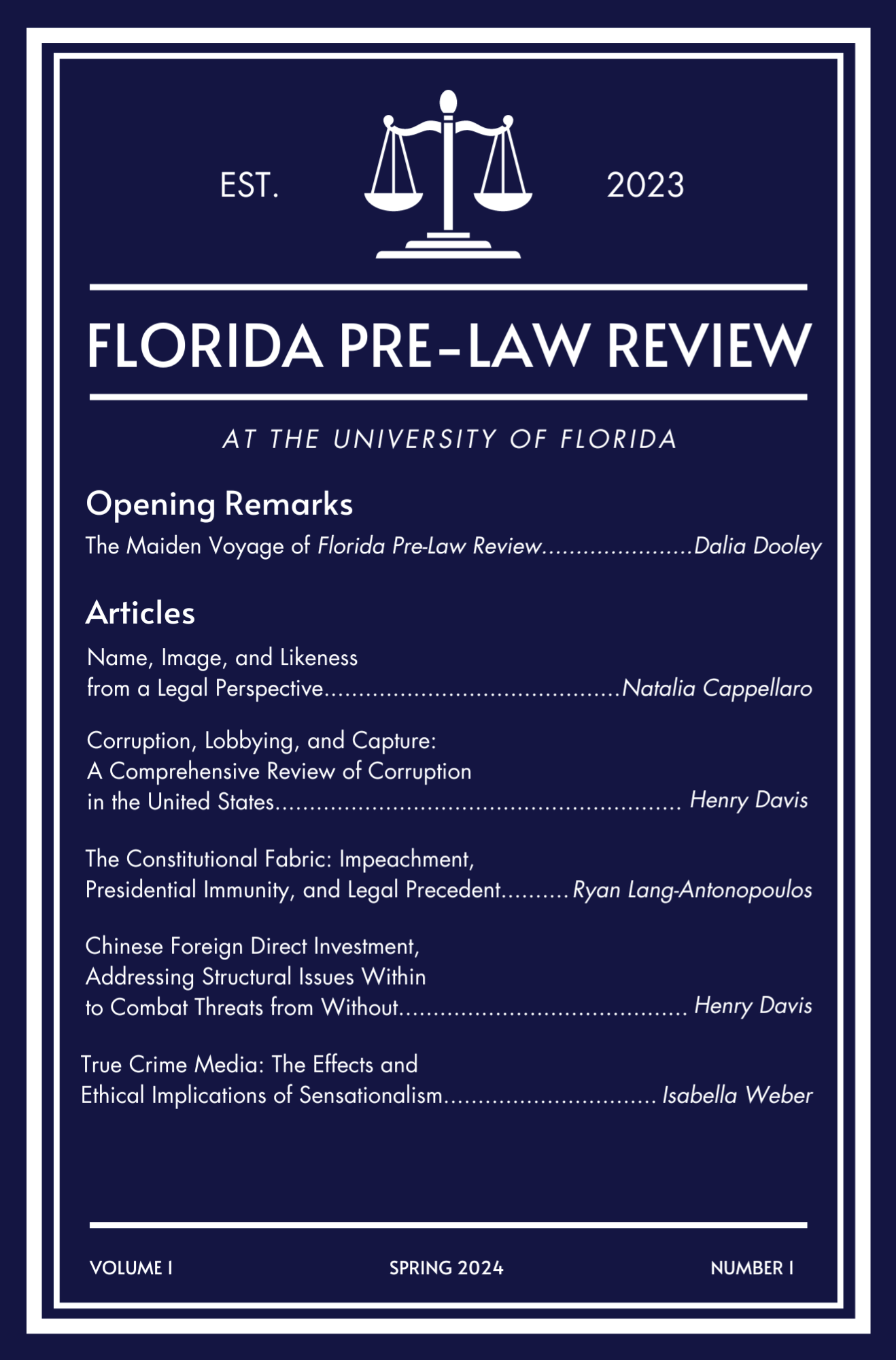The Constitutional Fabric
Impeachment, Presidential Immunity, and Legal Precedent
Keywords:
presidential immunity, Constitution, United States of America, immunityAbstract
This article investigates the complex structure of constitutional law surrounding impeachment and presidential immunity within the framework of the United States Constitution to argue why presidents cannot act outside the confines of the law. Beginning with the foundational principles outlined by James Madison and expanded on with landmark cases like Marbury v. Madison (1803) and Burr v. United States (1807), how constitutional interpretation has evolved and how the courts have played a role in maintaining the rule of law is examined. The Supreme Court has also defined the bounds of presidential immunity in cases such as Nixon v. United States (1974) and Clinton v. Jones (1997) and further with ongoing cases like Trump v. U.S.A. (2024). Dissecting legal doctrines and significant Supreme Court rulings regarding historical impeachments emphasizes the imperative nature of presidential accountability and the immutable principle that no one, not even the president, is above the law. This includes Andrew Johnson, Richard Nixon, Bill Clinton, and Donald Trump. These impeachment occurrences show how such events impact the executive powers that the President wields and further the legislative and judicial branches. The article's purpose is twofold: to elucidate the importance of the impeachment procedure as a safeguard against executive overreach and to allow an understanding that presidents are subject to the law, as shown by the Supreme Court and precedent-setting cases. Through rigorous analysis, the article serves to preserve democratic ideals and focus on an enduring practice of maintaining the rule of law in the American political landscape.


